Problems with attributing weights
There is a great deal we don't know about Islamic and Byzantine weights. They don't always weigh what they "should" and the usual reasons (excessive cleaning, corrosion, adhesions) often do not explain unusual masses. This page has some examples that pose questions about their attributions.
How can we attribute weights? Almost always the time period and location of a weight's production and of its use is obscure. We rarely know where they were found. Sometimes the mass doesn't seem quite right for the likely denomination. What can explain why a weight does not neatly fit the usual expectations?
For example, consider this well-preserved small weight.
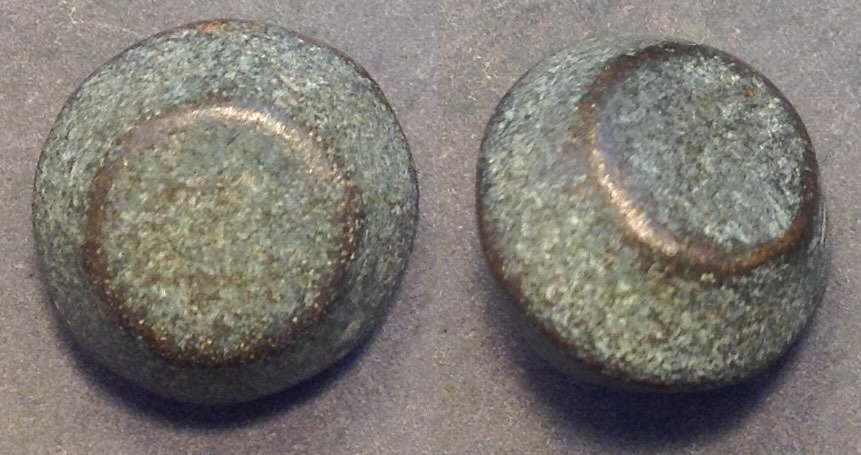 #103
#103
The shape is two truncated cones back-to-back.
7.83 grams. It is small and squat at
13.2 mm in diameter and only 8.7 mm high.
Assuming it is Islamic and Fatimid, as seems likely,
the shape suggests it is on the dinar standard.
I'll call 2 dinars at 3.92 grams/dinar.
That's light--maybe even very light, given dinars supposedly average 4.16 grams or more.
Why is it so "off"?
Corrosion doesn't seem to be a problem. Does the shape mean it is from a different time-period? Could it be Roman or Byzantine on a different standard?
Are modern expectations of precision inappropriate? But, Byzantine gold coins were very precisely made to the solidus standard (4.45 grams plus or minus less than 0.05 grams) for centuries, so we know they could be precise if they wanted to be.
How about this one?
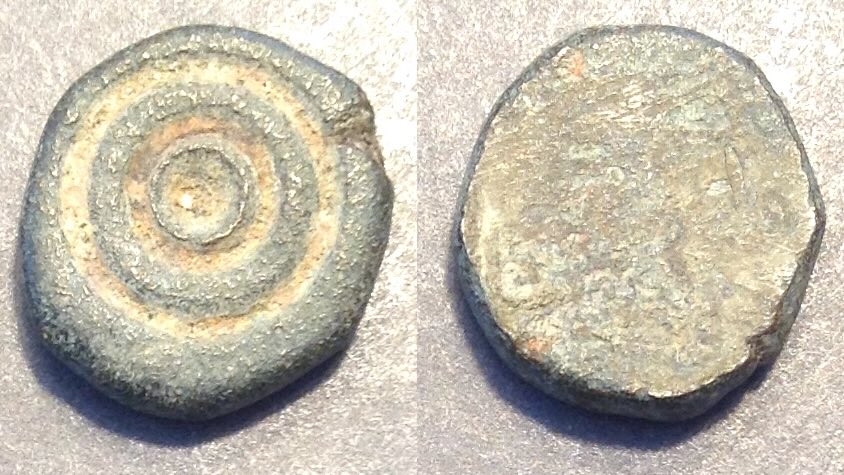 #102
#102
13.2 mm and 3.0 mm thick.
3.58 grams.
The discoid shape implies it is on the dinar standard. One bird's eye might suggest 1-dinar. But the dinar is over 4.0 grams and this piece is only 3.58 grams.
If we decide to omit it from consideration because it is so "wrong," what are we missing? Is it criminally made? From a different place or time?
The next one is light but has lettering that might turn out to be legible and so we might (eventually) be able to attribute it.
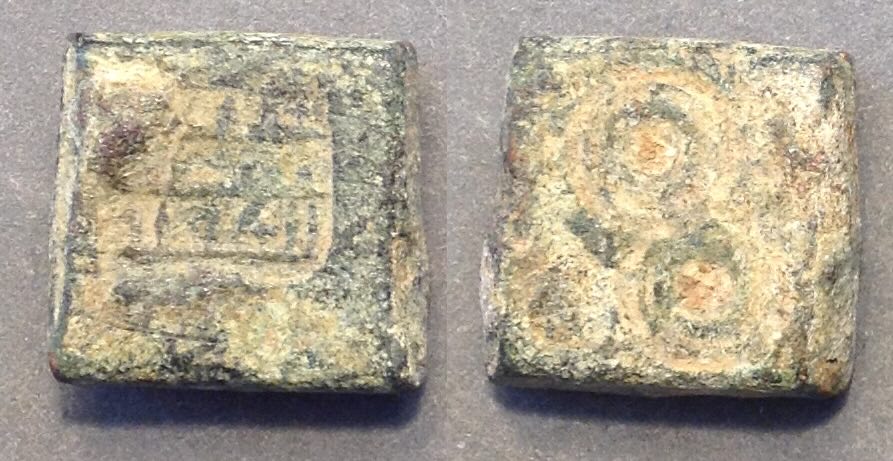 #104
#104
13.2 by 12.8 by 4.4 mm thick.
5.26 grams.
If this is a 2-dirham piece, which the two bird's eyes suggest it is 5.26 /2 = 2.63 grams/dirham. Not all 2-dirham weights have two bird's eyes. Some have four and some have none.
If it is a 2-dirham weight, it is very light. Why?
I don't think corrosion has reduced the weight. If anything has changed its weight, it might be the small adhesions which increase it slightly.
If the legend could be read it might give us a hint.
I've seen Islamic polyhedral pieces offered with listed weights well below their expected value. I can see why collectors might choose not to buy them and why scholars might omit them from catalogs and from calculations of typical masses. Does that produce a bias in our data?
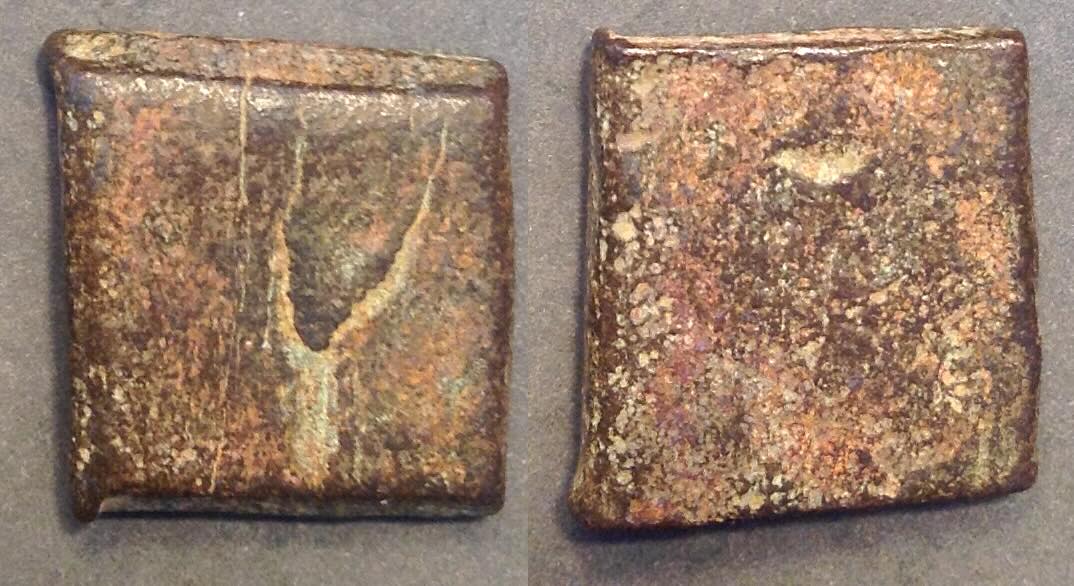 #107
#107
After looking at this piece closely from every angle I can't make out a design. The shape suggests it is a weight.
8.92 grams. 16.9 by 16.1 by 4.3 mm.
With only that for evidence, I attribute it as a
Byzantine 2-nomismata piece.
at 4.46 grams/nomisma.
Given the weight is just right for that Byzantine denomination, I decide that is the attribution.
Since I used its weight to decide it is Byzantine and its denomination, then I shouldn't use that decision (its denomination) to decide what the weight of a nomisma should be.
Why would a weight for such a large amount of value (2 gold pieces was a lot of money) be made in such a sloppy fashion?
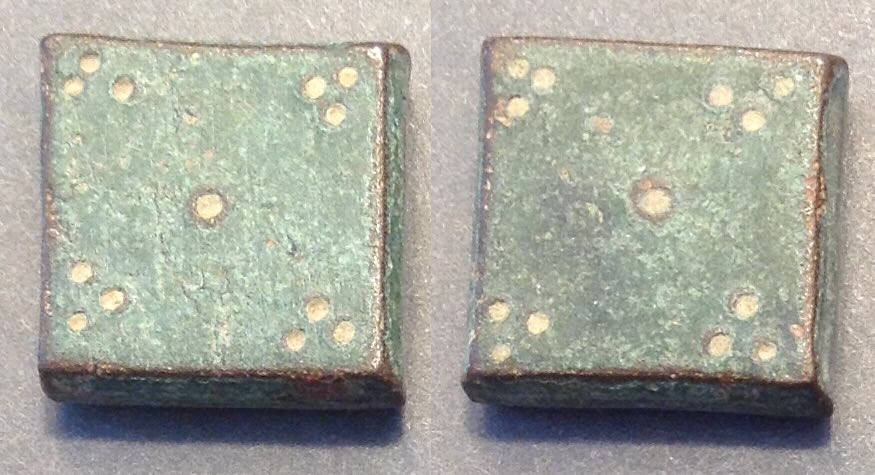 #101
#101
13.1 by 12.9 mm by 3.8 mm thick.
5.68 grams. (I don't think corrosion has affected this number.)
If this is a 2-dirham weight, and I think it is, it is a bit light at only 2.84 grams/dirham.
Note how, in addition to the central dot, there are 12 dots in the corners. 12 dots at 6 dots per dirham makes 2 dirhams.
Does the different design and light weight mean it is from a different place or time-period? We don't know (and won't until laws are changed to reward finders who report find spots and contexts.)
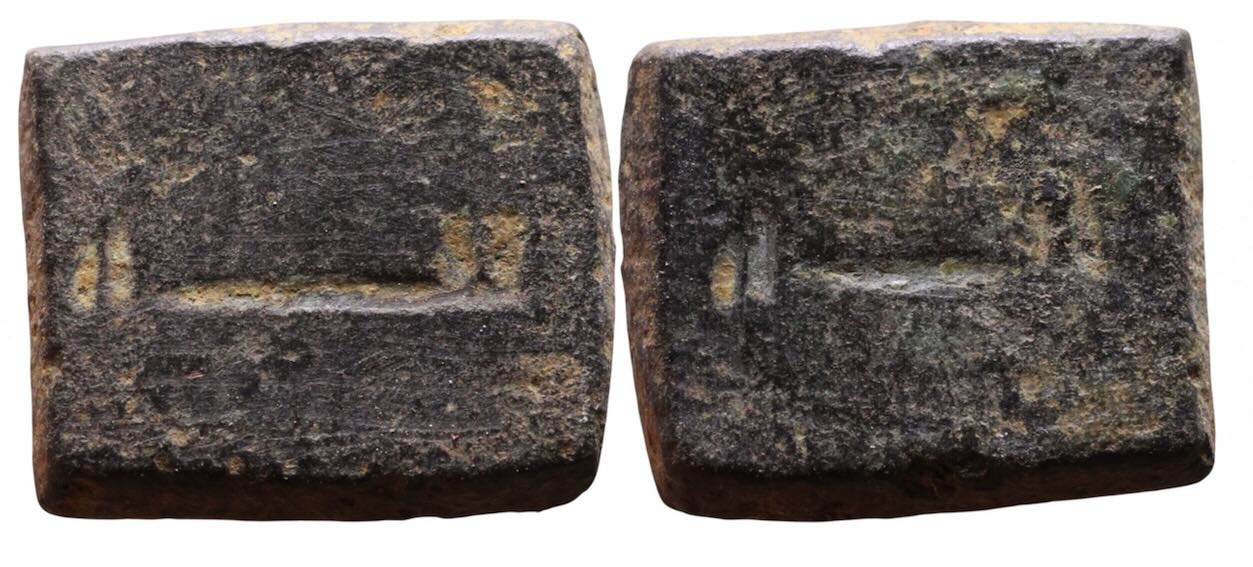 #2573
#2573
5.26 grams (very light at 2.63 grams/dirham)
14.3 by 12.2 by 3.8 mm thick.
A long horizontal line with two vertical strokes at each end.
This mark is also seen on 2-dinar weight (the flat weights page, #1085). That one is full weight, unlike this one.
What can explain why this weight is so underweight?
If you have any thoughts about these issues, write me, Warren at 
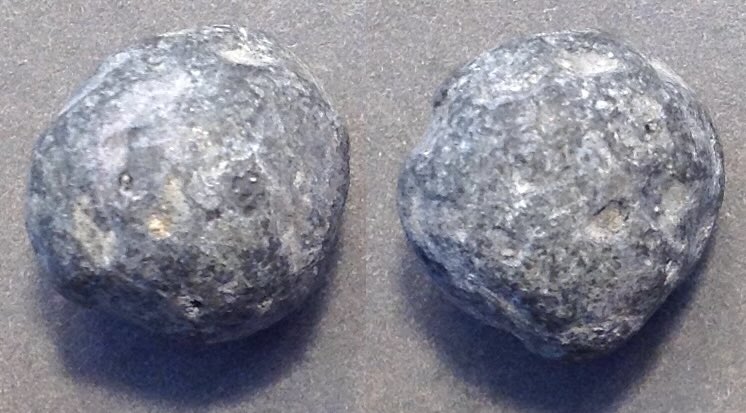 #108
#108
8.085 grams.
11.4 by 10.9 mm. Nearly spherical. Maybe polyhedral, but corroded surfaces make it hard to tell.
The mass is right for it to be a two-dinar piece at 4.04 grams/dinar.
But polyhedral two-dinar pieces don't seem right.
Is the gray color reason to think it is lead? Maybe is not a weight, but just something that happens to weigh the right amount?
Go to the page on Islamic polyhedral weights.
Go to the page on Islamic flat weights.
Go to the short page on Byzantine weights.
Go to the main Table of Contents page for this whole educational site.
 #103
#103 #102
#102 #104
#104 #107
#107 #101
#101 #2573
#2573
 #108
#108